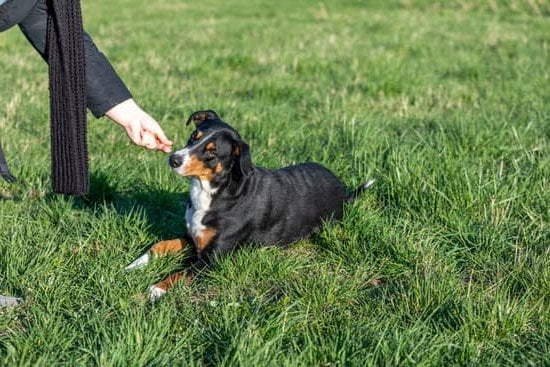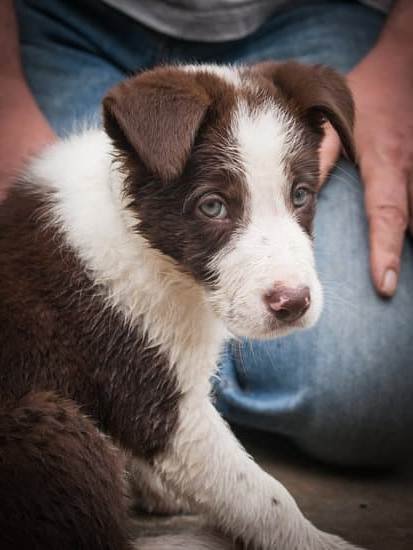House training is an essential aspect of owning a dog, and learning how to effectively train your furry friend on puppy pads can make the process much easier. In this article, we will explore the importance of house training and its impact on your dog’s behavior and overall well-being. We will also discuss the convenience and benefits of using puppy pads for house training.
House training plays a crucial role in shaping a dog’s behavior and ensuring a harmonious living environment for both you and your pet. When a dog is properly house trained, they are less likely to have accidents indoors and are more likely to be well-behaved and obedient. Additionally, house training instills discipline in your furry companion and helps establish boundaries within your home.
Using puppy pads for house training provides numerous advantages. Firstly, it gives you the flexibility to train your dog indoors, which is particularly beneficial if you live in an apartment or have limited access to outdoor spaces. Puppy pads also offer convenience by providing a designated area for your dog to relieve themselves while protecting your floors from potential accidents. They are highly absorbent and easy to clean up, making the entire house training process much more manageable.
By understanding the significance of house training and recognizing the benefits of using puppy pads, you can set yourself up for success when it comes to teaching your dog proper potty habits. So let’s dive deeper into understanding your dog’s behavior and needs in order to ensure effective house training on puppy pads.
Understanding Your Dog’s Behavior and Needs
When it comes to house training your dog on puppy pads, it is crucial to understand their behavior and needs. Dogs have a natural instinct to keep their living space clean, which is why they can be trained to use puppy pads effectively. By recognizing your dog’s signals and patterns, you can ensure successful house training and maintain a clean and hygienic home environment.
The Natural Instinct of Dogs
Dogs are den animals by nature, meaning they have an inherent desire to keep their living area clean. This instinct works in your favor when it comes to house training on puppy pads.
By utilizing this instinct, you can teach your dog to associate the puppy pads with their designated potty area. Understanding this natural inclination will help you as a pet owner create a positive association between your dog and the puppy pads, making the house training process more successful.
Recognizing Signals and Patterns
One of the keys to effective house training on puppy pads is being able to recognize your dog’s signals and patterns that indicate they need to go potty. Every dog has unique behaviors or body language that serve as indicators. For example, some dogs may start sniffing around or circling a specific spot before they eliminate.
Others may become restless or start pacing back and forth. By observing these cues closely, you can anticipate when your dog needs to go potty and redirect them to the puppy pad area.
It’s essential not only to recognize these signals but also establish a routine based on your dog’s individual needs. Some dogs may need frequent bathroom breaks, especially puppies or senior dogs, while others may require fewer trips throughout the day. By understanding your dog’s behavior patterns and adjusting accordingly, you can set them up for success in using the puppy pads consistently.
Choosing the Right Puppy Pads and Supplies
When it comes to house training a dog on puppy pads, choosing the right supplies is crucial for success. There are several factors to consider when selecting the appropriate puppy pads for your dog.
- Types of Puppy Pads: There are different types of puppy pads available in the market, such as disposable pads and reusable pads. Disposable pads are convenient because they can be easily disposed of after use, while reusable pads can be washed and reused multiple times. Consider your lifestyle and preferences before deciding which type is best for you.
- Size and Absorbency: It is essential to choose the right size and absorbency level of puppy pads for your dog. Larger dogs will require larger pads that can accommodate their size, while smaller dogs may find smaller pads more comfortable to use. Additionally, dogs that tend to urinate more will benefit from highly absorbent pads that prevent leaks and messes.
- Quality and Durability: Look for high-quality puppy pads that are durable and can withstand your dog’s usage. Cheap and flimsy pads may tear or leak easily, resulting in accidents and frustration during the house training process. Invest in reliable brands that provide strong absorption capabilities.
To make the process easier, consider using additional supplies alongside puppy pads:
- Puppy Pad Holder: A puppy pad holder can help secure the pad in place and prevent it from moving around or being shredded by your dog. This accessory adds stability to the potty area and reduces messes caused by displaced puppy pads.
- Attractant Spray: Some puppy pad brands offer attractant sprays that can be sprayed onto the pad to entice your dog to use it. These sprays have a scent that mimics a specific type of urine, making it more appealing for your dog to eliminate on the designated spot.
- Cleaning Solutions: Accidents may happen during the house training process, so it’s important to have cleaning solutions specifically designed for pet stains and odors. These solutions can effectively remove any lingering scents that may attract your dog to eliminate in inappropriate areas.
By choosing the right puppy pads and supplies, you can enhance the effectiveness of your dog’s house training on puppy pads. Remember, investing in quality products will save you time, effort, and frustration in the long run.
Setting Up the Perfect Indoor Potty Area
When house training a dog on puppy pads, it is crucial to create an appropriate and convenient potty area within your home. This designated space will help your dog understand where they should go to relieve themselves, making the training process more effective. Here are some step-by-step instructions to set up the perfect indoor potty area for your furry friend.
- Choose the right location: Selecting the right location for your dog’s indoor potty area is important. Ideally, it should be an easily accessible and quiet spot in your home where your dog feels comfortable. Avoid areas near their bed or food bowls as dogs naturally have a strong instinct to keep these areas clean.
- Use a puppy pad holder: Using a puppy pad holder can help keep the pads in place and prevent any messes or accidents from spreading onto your floors. These holders usually have raised edges, creating a boundary for your pup to target while using the pads.
- Consider size and coverage: Depending on the size of your dog, you may need to consider using multiple puppy pads or larger-sized ones to provide adequate coverage for them. This is especially important for larger or high-energy breeds that may require more space to do their business comfortably.
- Gradually reduce pad size: As your dog becomes more comfortable with using the puppy pads, you can gradually reduce the size of the potty area by removing one pad at a time. This will eventually encourage them to use only one specific spot for elimination.
By following these guidelines and providing a suitable potty area, you can ensure that your dog understands where it is appropriate to relieve themselves indoors during the house training process.
| Step | Description |
|---|---|
| Choose the right location | Select an accessible and quiet area in your home that your dog feels comfortable in. |
| Use a puppy pad holder | Invest in a puppy pad holder to keep the pads in place and prevent messes. |
| Consider size and coverage | Determine if you need multiple pads or larger-sized ones for adequate coverage based on your dog’s size and needs. |
| Gradually reduce pad size | As your dog becomes more comfortable, remove one pad at a time to encourage them to use a specific spot for elimination. |
Introducing Your Dog to the Puppy Pads
Gradual Introduction
When introducing your dog to puppy pads, it is important to take a gradual approach. This will help your dog feel comfortable and develop a positive association with the pads. Start by placing the puppy pad in an area where your dog already feels secure and familiar, such as their crate or a small enclosed space. Allow them to explore the pad at their own pace without any pressure or expectations.
Positive Reinforcement
To encourage your dog’s use of the puppy pads, it is crucial to use positive reinforcement techniques. Whenever your dog uses the pad correctly, immediately praise them and offer a small treat as a reward. Positive reinforcement helps create a positive connection between using the puppy pad and receiving rewards, which increases the likelihood of continued success.
Consistency and Patience
Consistency is key when introducing your dog to puppy pads. Ensure that you place the pad in the same location each time and maintain a regular schedule for potty breaks. This consistency helps establish a routine for your dog and reinforces the idea of using the pads for elimination.
Additionally, be patient with your dog during this training process. Every dog learns at their own pace, so some may catch on quickly while others may take more time. It is important not to get frustrated or punish your dog for accidents or mistakes. Instead, focus on positive reinforcement and offering guidance whenever needed.
By taking a gradual approach, using positive reinforcement techniques, and practicing patience and consistency, you can successfully introduce your dog to puppy pads. Remember that every dog is different, so adjust your training methods based on their individual needs and progress.
Establishing a House Training Routine
Once you have set up the perfect indoor potty area and introduced your dog to the puppy pads, it is crucial to establish a regular house training routine. A structured schedule will help your dog develop good habits and make significant progress in their house training journey. In this section, we will discuss how to create a routine that suits your dog’s needs and ensures consistent house training.
Firstly, it is essential to consider your dog’s age, breed, and individual needs when establishing a house training routine. Puppies have smaller bladders and may need more frequent potty breaks compared to adult dogs.
As a general guideline, puppies under six months old should be taken to the puppy pads every two to three hours during the day, as well as after meals, playtime, and naps. Adult dogs may only need to use the puppy pads three to four times per day.
Consistency is key in establishing a successful house training routine. Try to stick to a regular schedule for taking your dog to the puppy pads consistently throughout the day. For example, take them out first thing in the morning, after each meal, before bed, and at regular intervals in between. This predictability will help your dog understand when they should expect potty breaks and reduce the likelihood of accidents outside of the designated area.
In addition to consistent timing, it is crucial to be patient with your dog during the house training process. Some dogs grasp the concept quickly, while others may take more time to learn.
If you notice any signs that your dog needs to go potty outside of their scheduled time or if they start showing restlessness or sniffing around their potty area, immediately guide them towards the puppy pads. Over time, they will become accustomed to this routine and rely on it for their bathroom needs.
By creating a structured routine based on your dog’s age, breed, and individual needs and maintaining consistency and patience throughout the house training process, you will be well on your way to successfully house training your dog on puppy pads. With time, practice, and positive reinforcement techniques, your dog will develop good habits and gradually become accustomed to using the puppy pads for their bathroom needs.
Positive Reinforcement Techniques for Successful Training
Positive reinforcement is a highly effective and humane training method that can be used to house train a dog on puppy pads. This section will explore different reward-based techniques that can encourage desired behavior and reinforce the usage of puppy pads. By using positive reinforcement, you can create a positive association for your dog with the puppy pads, making the training process both enjoyable and successful.
One of the most effective positive reinforcement techniques is using treats. When your dog successfully uses the puppy pad, immediately reward them with a small, tasty treat. This reinforces the idea that using the pad is a desirable behavior.
It’s important to choose treats that are highly motivating for your dog; treats with a strong aroma or flavor tend to work best. Be consistent in providing treats every time your dog uses the puppy pad correctly to strengthen their association between using the pad and receiving rewards.
In addition to treats, praise also plays a crucial role in positive reinforcement. Dogs thrive on verbal cues and encouragement from their owners, so it’s important to lavish them with praise whenever they use the puppy pad correctly. Offer enthusiastic verbal cues such as “Good job.” or “Well done.” along with plenty of affectionate pats or belly rubs. Make sure your tone of voice is upbeat and cheerful to convey your approval and satisfaction.
Consistency is key when using positive reinforcement techniques. Your dog needs to understand that consistently using the puppy pad will result in rewards and praise every time. Set aside dedicated training sessions throughout the day where you focus solely on house training exercises with your dog. By creating a consistent training routine, you’ll help solidify good habits and make it easier for your dog to understand what is expected of them.
By implementing these positive reinforcement techniques during house training, you’re not only teaching your dog where to eliminate but also building a strong bond based on trust and mutual understanding. Remember to be patient throughout the process as every dog learns at their own pace. With consistency, praise, and treats, you’ll have a well-trained dog who understands the concept of using puppy pads in no time.
Troubleshooting Common House Training Challenges
House training a dog on puppy pads can be a highly effective method, but it is not without its challenges. Many pet owners may encounter obstacles and setbacks along the way. In this section, we will provide solutions and advice for some common issues that may arise during the house training process.
One common challenge is when accidents occur outside of the designated potty area. This can happen if the puppy pads are positioned too far away or if the dog has difficulty finding their way to the designated spot.
To address this, make sure that the puppy pads are easily accessible for your dog and located in a convenient area within your home. Additionally, supervise your dog closely during the training phase to redirect them to the designated potty area if they show signs of needing to relieve themselves elsewhere.
Another challenge that dog owners may face is confusion or resistance to using puppy pads. Some dogs may be unsure about what is expected of them or prefer to do their business elsewhere. If this occurs, it may help to adjust your training approach and reinforce positive behaviors. Try using treats and praise as rewards when your dog successfully uses the puppy pad, and be consistent in providing positive reinforcement each time.
It’s also important to regularly replace soiled puppy pads with clean ones to maintain cleanliness and hygiene in your home. Dogs have a keen sense of smell and are more likely to use a clean pad rather than one that has already been used.
| Common House Training Challenges | Solutions |
|---|---|
| Accidents occurring outside of designated potty area | – Ensure easy access to the puppy pads
|
| Confusion or resistance to using puppy pads | – Adjust training approach
|
| Regularly replacing soiled puppy pads | – Maintain cleanliness and hygiene in the potty area
|
By troubleshooting these common house training challenges, you can ensure a smoother and more successful training experience for both you and your dog. Remember to be patient, consistent, and persistent in your efforts. With time and proper guidance, your dog will become accustomed to using puppy pads and develop good house training habits.
Gradual Transition to Outdoor Potty Training
The transition from using puppy pads for house training to outdoor potty training is an important step in a dog’s development. It allows them to learn how to properly relieve themselves outside and become accustomed to the new environment. This section will provide a step-by-step guide on how to gradually transition your dog from using puppy pads indoors to going potty outside.
- Start by moving the puppy pad closer to the door: Begin by gradually moving the puppy pad closer to the door leading outside. This helps your dog associate the act of relieving themselves with being near the exit. You can do this over several days or weeks, depending on your dog’s progress and comfort level.
- Introduce outdoor potty breaks: Once your dog is comfortable with using the puppy pad near the door, it’s time to start introducing outdoor potty breaks. Take your dog outside at regular intervals, such as after eating or napping, and encourage them to go potty in your designated area outdoor. Use cues or commands like “go potty” or “be quick” to help them understand what is expected.
- Praise and reward outdoor success: When your dog successfully goes potty outdoors, be sure to praise and reward them immediately. Use treats, verbal praise, or gentle petting to reinforce their good behavior. Positive reinforcement strengthens the association between going potty outside and receiving rewards, making it more likely that they will continue this behavior.
- Gradually reduce reliance on puppy pads: As your dog becomes more comfortable with going potty outside, you can start reducing their access to indoor puppy pads. Remove one pad at a time while continuing with regular outdoor potty breaks. This gradual reduction helps your dog transition smoothly without feeling overwhelmed.
- Monitor and adjust as needed: During this transition period, closely monitor your dog’s behavior for any signs of regression or confusion. If accidents occur indoors, it may be necessary to reintroduce puppy pads temporarily or adjust the potty routine. Remember to be patient and understanding during this learning process.
By following these steps, you can successfully transition your dog from using puppy pads for house training to outdoor potty training. It’s important to remember that each dog progresses at their own pace, so be flexible and adapt the training methods as needed. With consistency and positive reinforcement, your dog will soon become fully house trained and ready for life without puppy pads.
Conclusion
In conclusion, house training a dog on puppy pads is an effective and convenient method that can lead to positive behavior and overall well-being for both the dog and the owner. Throughout this article, we have discussed various aspects of house training, from understanding your dog’s behavior and needs to establishing a routine and troubleshooting common challenges. By following these steps and implementing positive reinforcement techniques, you can successfully train your dog to use puppy pads.
It’s important to remember that house training takes time, patience, consistency, and perseverance. It is a process that requires dedication from both the owner and the dog. Celebrate each milestone achieved by your furry friend during the training process. Whether it’s using the puppy pads consistently or reducing accidents outside the designated area, every progress should be recognized and celebrated.
Maintaining good habits is equally crucial in ensuring long-term success with house training. Even after your dog has become fully accustomed to using puppy pads indoors, it is essential to gradually transition them to outdoor potty training when appropriate. This will help them develop proper bathroom etiquette in various environments.
By celebrating progress, maintaining good habits, and providing consistent reinforcement throughout the house training journey, you can enjoy a well-trained dog that understands where to go potty while maintaining a clean living space for you both. Remember, building a strong bond with your pet through positive reinforcement will not only result in successful house training but also create a stronger connection between you and your furry companion.
Frequently Asked Questions
How do I get my dog to pee and poop on my puppy pad?
To get your dog to pee and poop on a puppy pad, you need to establish a consistent routine and use positive reinforcement. Start by placing the puppy pad in a designated area that is easily accessible for your dog. Take your dog to the pad frequently, especially after meals or naps, as these are times when they are more likely to eliminate.
When your dog uses the pad correctly, praise and reward them with treats or verbal praise immediately. If accidents occur elsewhere, clean the area thoroughly and avoid scolding or punishing your dog as this can create anxiety and hinder training progress. With consistency and patience, your dog will learn to associate the puppy pad with elimination.
How do you get a house trained dog to use a pee pad?
Transitioning a house trained dog to use a pee pad requires a similar approach as training a puppy. Begin by selecting an appropriate location for the pee pads that is easily accessible for your dog. Introduce the pads gradually by placing them near the usual spot where your dog eliminates outdoors.
Encourage your dog to use the pee pads by taking them there frequently throughout the day, especially after meals or at times when they normally relieve themselves. Use positive reinforcement such as treats and praise when they successfully use the pads. It’s important to monitor closely during this transition phase, provide guidance, and be patient as it may take some time for them to get accustomed to using pee pads indoors.
How long does it take to train a puppy on pee pads?
The time required to train a puppy on pee pads can vary depending on several factors such as breed, age, individual temperament, and consistency of training methods. Generally, it can take anywhere from a few weeks up to several months to fully train a puppy on pee pads. The key is establishing a consistent routine, providing positive reinforcement for successful pad usage while avoiding punishment for accidents in other areas of the house.
Puppies have different learning speeds, so it’s important not to rush or become frustrated during the process. Continued consistency in training will eventually help them develop the habit of using pee pads consistently.

Welcome to the blog! I am a professional dog trainer and have been working with dogs for many years. In this blog, I will be discussing various topics related to dog training, including tips, tricks, and advice. I hope you find this information helpful and informative. Thanks for reading!





